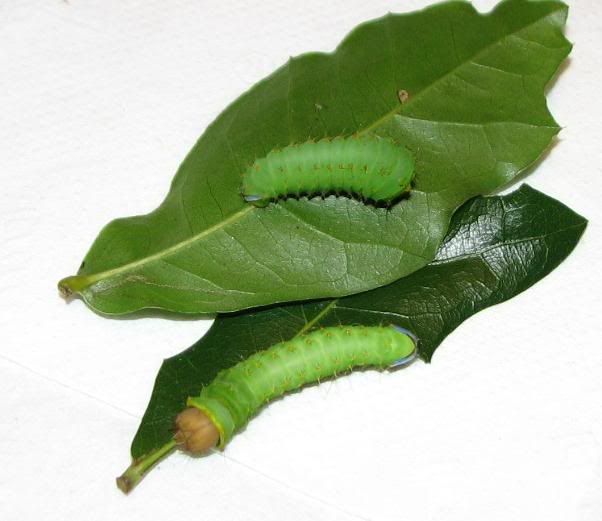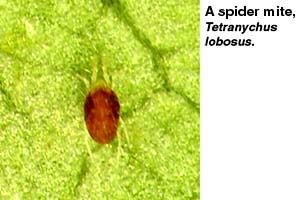While watching our bird feeders today, there was a different bird hanging around that we haven't seen before. It took some research, but I learned it's an immature male rose-breasted grosbeak. The immature male is difficult to identify because it resembles the colors of the female. However, you can see the rosey tint on it's chest and black on the wings, which the female doesn't have.
The adult male is absolutely stunning though, a very attractive bird. The link below shows an adult male rose-breasted grosbeak
adult male rose-breasted grosbeak picture
Information on the Rose-breasted Grosbeak

First bloom today on another tropical hibiscus plant, the Cosmic Dancer. I've had this one for a couple months now and this is the first time it has bloomed. Very bright colors
It's been 18 days since the larvae hatched out of those strange eggs
(see previous post here)
I originally had about 25 larvae, but they were eating so much that I had to keep refilling the oak leaves in the jar. So I released several and now I'm raising 4 caterpillars. I've read they get about 2 inches long before they start to form cocoons. Right now they are a little over an inch long. Will update again in a couple weeks!

Spider mites are a warm weather problem for several hibiscus growers. They thrive in hot, sunny, and dry conditions when temperatures are high. The first sign of spider mites is when a leaf or two get yellow mottling mixed in its normal green, then slowly the entire leaf turns bright yellow then falls off. Soon more and more leaves turn yellow and fall off, which can be fatal to your plants. As the spider mites spread, you can see very fine webbing at the tips of the branches with yellow leaves.
I've been battling with spider mites for the last 2-3 weeks. As a safe treatment, it was recommended to spray the underside of leaves with a hard stream of water at least once a week. This washes off the spider mites and breaks their lifecycle. However, this method has been ineffective on our large hibiscus plant, which has lost most of it's leaves due to spider mite damage. One by one, the leaves would yellow and fall off within 24 hours. Amazingly, the hibiscus was still blooming well during this time.
I also tried the use of beneficial insects, the Green Lacewing larvae. I received the eggs in the mail from http://www.arbico-organics.com. When I noticed some of the eggs had hatched inside the container, I sprinkled the eggs and live larvae onto the hibiscus plant. This method will reduce the number of spider mites if applied correctly.
I also researched Miticides that were proven effective. The two name brands I found most popular are Forbid 4F and Floramite SC, both of which kill the adult mites AND the eggs. Forbid 4F seems to be the stronger of the two, since it kills all kinds of mites. Forbid 4F offers knockdown and residual control of mites and whiteflies. The active ingredient in Forbid is spiromesifen. I purchased a 5mL bottle of Forbid 4F on eBay, which makes 8 gallons and is more than enough for a small volume grower.
Compare miticides such as Forbid & Floramite here :
Miticide Chart 
Ordered some vegetable seeds, radish and lettuce, from Park Seed Co.
Radish Cherriette Hybrid
Lettuce Green Ice
The small bird feeder in our backyard has been attracting some hungry wildlife. A pair of Tufted Titmouse birds are visiting the feeder everyday, and also a male & female Cardinal are using it frequently. 
Found some unusual egg capsules under some Hibiscus leaves, so I collected them and put them in a jar to hatch. Below is a picture of the eggs..
After a few days, the eggs hatched into tiny larvae that looked like caterpillars...
Very hard to identify these larvae, but after some research on Google, I learned the same eggs and same larvae belong to the beautiful Polyphemus Moth. The website below shows more detailed pictures on the lifecycle of this particular moth.
Website on the Polyphemus Moth
I'm feeding the newly hatched larvae oak leaves and there are about 20 babies in a jar right now. Will update as they get grow bigger. =)



